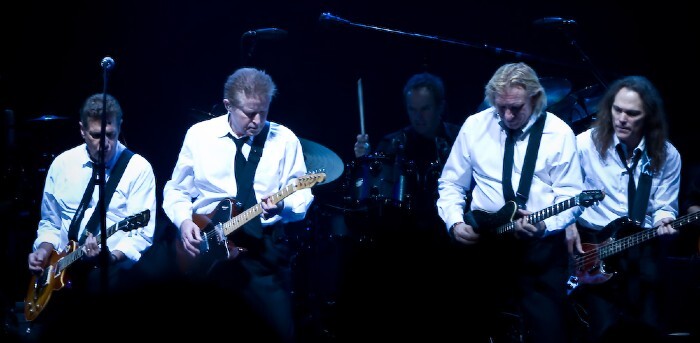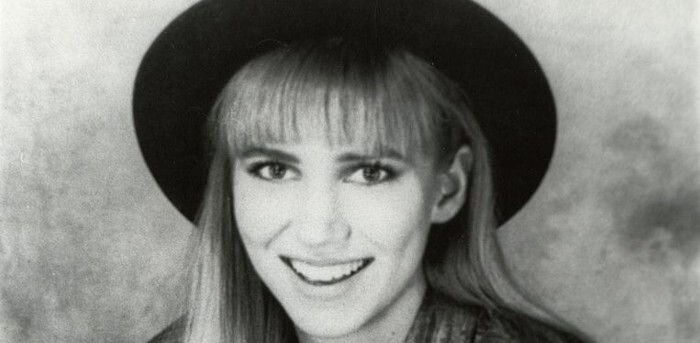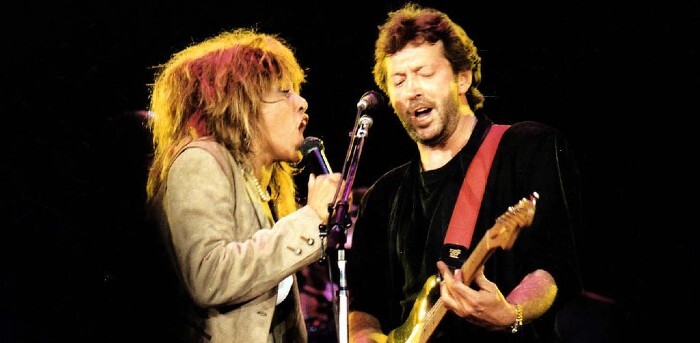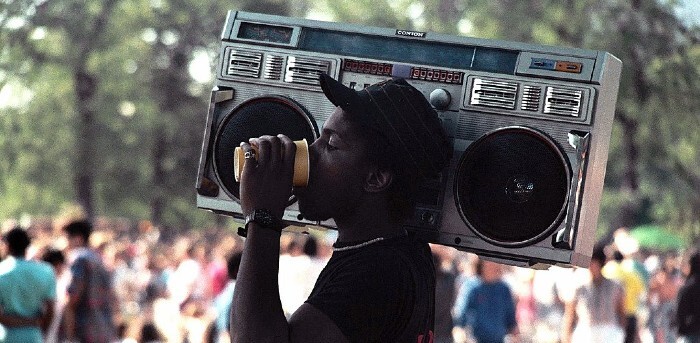15 Ways the ‘80s Changed Music

Every generation likes to think the music that defined them also defined everybody else, and that’s true to an extent. It’s hard to imagine what we’d be doing with guitars without the Beatles, we’d probably still be wearing ridiculously tight pants had it not been for Nirvana, etc. But a number of technological and cultural breakthroughs in the ‘80s ripped genres apart, created others from scratch, and ensured for the rest of our lives that great artists also had to be hot.
The Birth of MTV

Arguably the most important musical moment of the ‘80s was when some unnamed engineer hit “play” on the “Video Killed the Radio Star” music video, launching MTV on August 1, 1981. Before then, music videos weren’t common and mostly got played in dance clubs or when artists couldn’t make personal appearances. Being attractive has always increased your chances at fame, but more than ever, an artist had to have a distinct sound and visual aesthetic, A.K.A. inspire boners of all genders. It turns out video kinda did kill the radio star.
Pop Superstars

Before the ‘80s, the Elvis- and Beatles-level superstars were confined to the, you know, Elvis and Beatles genre of rock and roll, but the MTV era ushered in the rise of the pop superstar with Michael Jackson, Madonna, Prince, Whitney Houston, etc. Thriller remains the bestselling album of all time, and in 1988, Whitney broke the Beatles’s record for most consecutive number-one singles. That wasn’t even her final form. She hadn’t Bodyguarded out yet. Speaking of which…
The Rise of the Soundtrack Album
Movie soundtracks have been around forever, but they were mostly original songs written for the movie until the soundtrack of Saturday Night Fever “sold a gazillion copies” of Bee Gees songs in the late ‘70s. Record and movie executives started conspiring to place popular songs in movies like Dirty Dancing, Footloose, and Flashdance, leading to entire generations that can be divided by whether or not they think of Batman when they hear “Kiss From a Rose.”
Country Rock Died (Literally)

With the tragic deaths of half of Lynyrd Skynyrd in 1977 and the breakup of the Eagles in 1980, country rock’s heyday was effectively over, no matter how bad Kid Rock desires otherwise. It split off into the heartland rock of Bruce Springsteen and John Mellencamp, one of the bestselling genres of the decade, and the country pop of Urban Cowboy and Dolly Parton, a woman made for the ‘80s if there ever was one.
Disco Died (Mostly Metaphorically)

By 1979, a rising tide of American conservatism (we were coming up on the Reagan years, after all) empowered white dudes of all stripes to fight back against what they saw as a cultural takeover by gays and racial minorities. Sound familiar? Well, instead of storming the capitol, they stormed the field at a White Sox game to smash and burn disco records, which was somehow more violent. After “Disco Demolition Night,” disco sales plummeted through the first years of the new decade, making it all seem like a sparkly and very chatty dream.
Modern Dance Music
Of course, disco never really died. It just got a digital makeover and became modern dance music. Plenty of early Madonna and Michael Jackson songs sound perfectly at home under a disco ball, not to mention all those songs you couldn’t name but made you go “Hey, I know that song!” when you watched Party Monster.
The Teen Pop Craze

Teen pop existed before the ‘80s, but it was largely written and alarmingly often performed by old men and had been mostly dormant since the ‘50s, when rock and roll became the soundtrack of choice for whining about your mom. As dance music became more popular, however, so did music by the teen girls who were doing the dancing, like Tiffany and Debbie Gibson, and the boys they wanted to dance with, like New Kids on the Block. This in turn sowed the seeds of Britney, Backstreet, and the reigning antichrist of teen pop, Justin Bieber.
The Comeback Era

For all its focus on youth and beauty, the ‘80s set the stage for several older stars who everyone thought had long since washed up like Tina Turner, Aerosmith, Cher and her butt, and the Beach Boys, proving to the Britney Spearses and Mariah Careys of the future that it’s never too late and getting “Kokomo” stuck in your head any time someone mentions Aruba.
Cassettes, CDs, and Boomboxes

The ‘80s changed not just what we listen to but how we listened to it. The popularity of cassette tapes and then CDs made it easy to create personalized mixes to embarrass ourselves to our crushes, Walkmen and then Discmen allowed us to take our tunes everywhere we go for the first time, and for better or worse, boomboxes foisted our musical choices on everyone within earshot.
The Golden Age of Hip Hop

It’s no coincidence that, as this new technology became cheaper and more accessible, the golden age of hip hop rose up in the late ‘80s. Breakdancing is a lot easier with a battery-operated boombox, and DJs and MCs could record cassette tapes to pass around, resulting in the most innovative artists of the period actually getting mainstream attention. Record executives don’t tend to hang out on the corner, after all.
Digital Recording
Technological advances also changed the way we produce and record music. Drum machines, synthesizers, and samplers put a world of instruments at the actual fingertips of people who may or may not have ever played an instrument before, and digital recording techniques made everything cheaper and more efficient, even if guys who are always haranguing baristas think it sounds worse.
The Birth of Techno
It’s rare that an entire genre can be traced to such a specific place and time, but techno was born in the Detroit suburbs in 1981, birthed by a trio of teenagers known as the Belleville Three who bonded over being the only black kids in their school. They were just hoping to get played on their favorite radio show and DJ some parties, but their mixes made it all the way to the U.K. and Berlin -- you know, the places you actually think of when you think of techno.
Alternative Rock Goes Mainstream

Alternative rock emerged in the ‘70s as, well, an alternative to the arena rock of the era, but in the ‘80s, major labels started recognizing the enormous fanbases patiently built by bands like R.E.M. and the Violent Femmes. Alternative music is now squarely mainstream, because everything is meaningless.
Rock Music Divided Into Ever-Narrowing Subgenres
In the ‘70s, everyone knew what you meant by “rock” music: guys with long hair and tight jeans rambling on or dreaming on or generally being on stuff, with a smattering of spiky leather jackets on the outskirts. By the ‘80s, you had your Van Halen hard rock, which wasn’t quite as hard as your Metallica heavy metal, while so many of the punks went and became new wave. Now we have numetal and noisecore and no one knows what to call anything.
Glam Metal Was Scary Important

The sub-sub-genre of glam metal -- you know, the guys with the makeup and teased hair who somehow got laid more than any man who ever lived -- became the “largest, most commercially successful” genre of music in the late ‘80s. Bon Jovi’s Slippery When Wet was the bestselling album of 1987, Gun N’ Roses’ Appetite For Destruction is still the bestselling rock album since its release the same year, and by the end of the decade, we were choking on hairspray and spandex. No wonder we all started wearing flannel.
Top image: Koh Hasebe/Wikimedia Commons